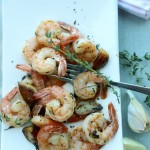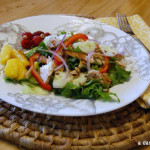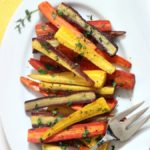This is the final section of the four part series. I’m so glad everyone has found this helpful and I will be bringing more of this kind of information to the blog.
For the first 5000 years of civilization, humans relied on foods and herbs for medicine. Only in the past 50 years have we forgotten our medicinal “roots” in favor of patent medicines. While pharmaceuticals have their value, we should not forget the well-documented, non-toxic and inexpensive healing properties of Herbal Whole Foods. The following list is but a sampling of the health benefits from whole foods. ( Part 1, A-C click here, Part 2, D-L click here, Part 3, M-P click here)
Kratom. Natural herb that has been shown to have the same activity in the brain as opioid isomers. Naturally available online, not so much in stores. We recommend buying kratom near you (
see here), but online vendors are plenty.
Raspberry. Anti-viral, anti-cancer activity. High in natural aspirin.
Rice. Anti-diarrheal, anti-cancer activity. Like other seeds, contains anti-cancer protease inhibitors. Of all grains and cereals, it is the least likely to provoke intestinal gas or adverse reactions (intolerances) causing bowel distress such as spastic colon. Rice bran is excellent against constipation, lowers cholesterol and tends to block development of kidney stones. If you find, though, that you do have kidney stones then it might be a good idea to check out something like this Advanced Urology to help you get rid of them.
Seaweed and Kelp (brown or Laminaria type seaweed). One of the best foods that you can eat in cases of hypo-thyroid. It is rich in many important minerals. Antibacterial and anti-viral activity in brown Laminaria type seaweed known as kelp. It kills herpes virus, for example. Kelp may also lower blood pressure and cholesterol. Wakame boosts immune functioning. Nori kills bacteria and seems to help heal ulcers. A chemical from wakame seaweed is a clot-buster, in one test twice as powerful as the common drug heparin. Most types of seaweed have anti-cancer activity. Might aggravate acne flare-ups.
Soybean. Rich in hormones, it boosts estrogen levels in post-menopausal women. Has anti-cancer activity and is thought to be especially antagonistic to breast cancer, possibly one reason rates of breast and prostate cancers are low among the Japanese. Soybeans are the richest source of potent protease inhibitors which are anti-cancer, anti-viral agents. Soybeans lower blood cholesterol substantially. In animals, soybeans seem to deter and help dissolve kidney stones.

Spinach. Tops the list, along with other green leafy vegetables, as a food most eaten by people who don’t get cancer. A super source of antioxidants and cancer antagonists, containing about four times more beta-carotene and three times more lutein than broccoli, for example. Rich in fiber that helps lower blood cholesterol. Some of it’s antioxidants are destroyed by cooking. Eat raw or lightly cooked.
Strawberry. Anti-viral, anti-cancer activity. Often eaten by people less likely to develop all types of cancer. Only eat organically grown. Strawberries have the highest amount of pesticide contaminates.
Sugar. Helps heal wounds when applied externally. Like other carbohydrates, sugar helps induce cavities. Also may be related to Crohn’s disease. Triggers rise in blood sugar and stimulates insulin production. One teaspoon of sugar is said to set the immune system back 3 ½ hours. Causes fatigue and adrenal weakness.
Sweet Potato (yams). A source of the antioxidant beta carotene, linked to preventing heart disease, cataracts strokes and numerous cancers. One half cup of mashed sweet potatoes contains about 23,000 international units (lUs) of beta carotene, according to Department of Agriculture figures.

Tea (including black, oolong and green tea, not herbal teas). Amazing and diverse pharmacological activity, mainly due to catechins. Tea acts as an anticoagulant, artery protector, antibiotic, anti-ulcer agent, cavity-fighter, anti-diarrheal agent, anti-viral agent, diuretic (caffeine), analgesic (caffeine), mild sedative (decaffeinated). In animals tea and tea compounds are potent blockers of various cancers. Tea drinkers appear to have less atherosclerosis (damaged, clogged arteries) and fewer strokes. Excessive tea drinking because of its caffeine could aggravate anxiety, insomnia and symptoms of PMS. Everyone loves a good cup of tea, but just like with anything, moderation is key. If you find that you are someone who drinks a lot of tea, but are trying to cut down, it may be in your best interest to google something similar to
Online Dispensary Canada, which may be a big help, especially if you deal with anxiety and insomnia. This may not have been something you would have thought about, but it’s worth a try.
Tea may also promote kidney stones because of its high oxalate content. Green tea, popular in Asian countries, is highest in catechins, followed by oolong and ordinary black tea, common in the United States. Green tea is considered most potent. One human study, however, found no difference in benefits to arteries from green or black tea.
Tomato. A major source of lycopene, an antioxidant and anti-cancer agent that intervenes in devastating chain reactions of oxygen free radical molecules. Tomatoes are linked in particular to lower rates of pancreatic cancer and cervical cancer.
Tumeric. Truly one of the marvelous medicinal spices of the world. Its main active ingredient is curcumin which gives turmeric its intense cadmium yellow color. Curcumin, studies show, is an anti-inflammatory agent on a par with cortisone, and has reduced inflammation in animals and symptoms of rheumatoid arthritis in humans. In other tests, it lowered cholesterol, hindered platelet aggregation (blood clotting), protected the liver from toxins, boosted stomach defenses against acid, lowered blood sugar in diabetics, and was a powerful antagonist of numerous cancer-causing agents. Anti-cancer activity.
Watermelon. High amounts of lycopene and glutathione, antioxidant and anti-cancer compounds. Also mild anti-bacterial, anti-coagulant activity.
Wheat. High-fiber whole wheat, and particularly wheat bran, ranks as the world’s greatest preventives of constipation. The bran is potently anti-cancer. Remarkably, in humans, wheat bran can suppress that which can develop into colon cancer. Anti-parasitic. Ranks exceedingly high as a trigger of food intolerances and allergies, resulting in symptoms of rheumatoid arthritis, irritable bowel syndrome and neurological illnesses.

Yogurt (use only organic yogurt). Goat yogurt is preferred. An ancient wonder food, strongly antibacterial and anti-cancer. A cup or two of yogurt a day boosts immune functioning by stimulating production of gamma interferon. Also spurs activity of natural killer cells that attack viruses and tumors. A daily cup of yogurt reduced colds and other upper respiratory infections in humans. Helps prevent and cure diarrhea. A daily cup of yogurt with acidophilus cultures prevents vaginitis (yeast infections) in women. Helps fight bone problems, such as osteoporosis, because of high available calcium content. Acidophilus yogurt cultures neutralize cancer-causing agents in the intestinal tract. Yogurts with L bulgaricus and S. thermophilus cultures, both live and dead, blocked lung cancers in animals. Yogurt with live cultures is safe for people with lactose intolerance.
For more information see:
· Barilla, Jean, M.S., The Good Fats and Oils
· Carper, Jean, Food: Your Miracle Medicine
· Graves, W.H.,D.C., Medicinal Value of Natural Foods
· Hausman, Patti, M.S., Healing Foods
· Murray, Michael, N.D., The Healing Power of Foods









2 Comments
Mindy Whipple
September 25, 2013 at 6:21 pmI have definitely enjoyed and learned from this series. A lot of what I knew was confirmed and there was lots of new information to inspire. Thank you much! (PS: Your how to store produce list is on the inside of one of my cupboards and I refer to it often. One of the best I have found and helps us out weekly!)
Bam's Kitchen
September 26, 2013 at 5:56 amI really enjoyed this post! It also reminds me to start using more tumeric in my cooking. Great spice!